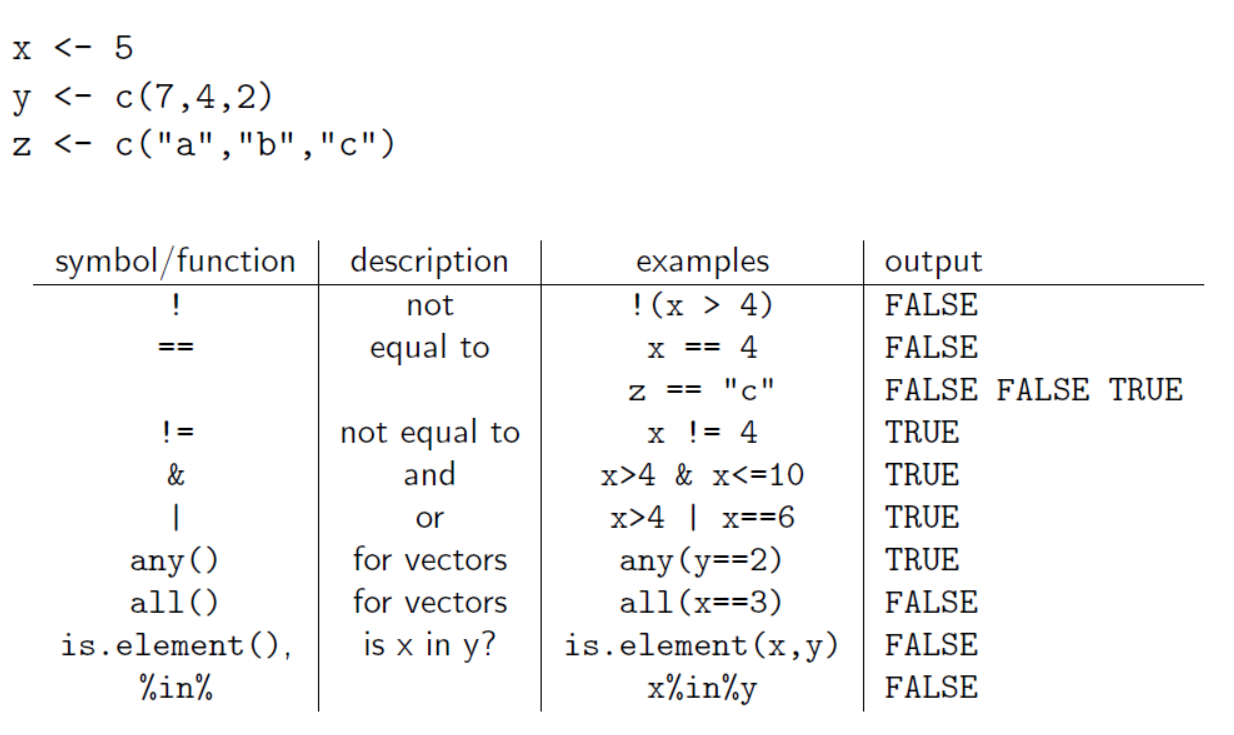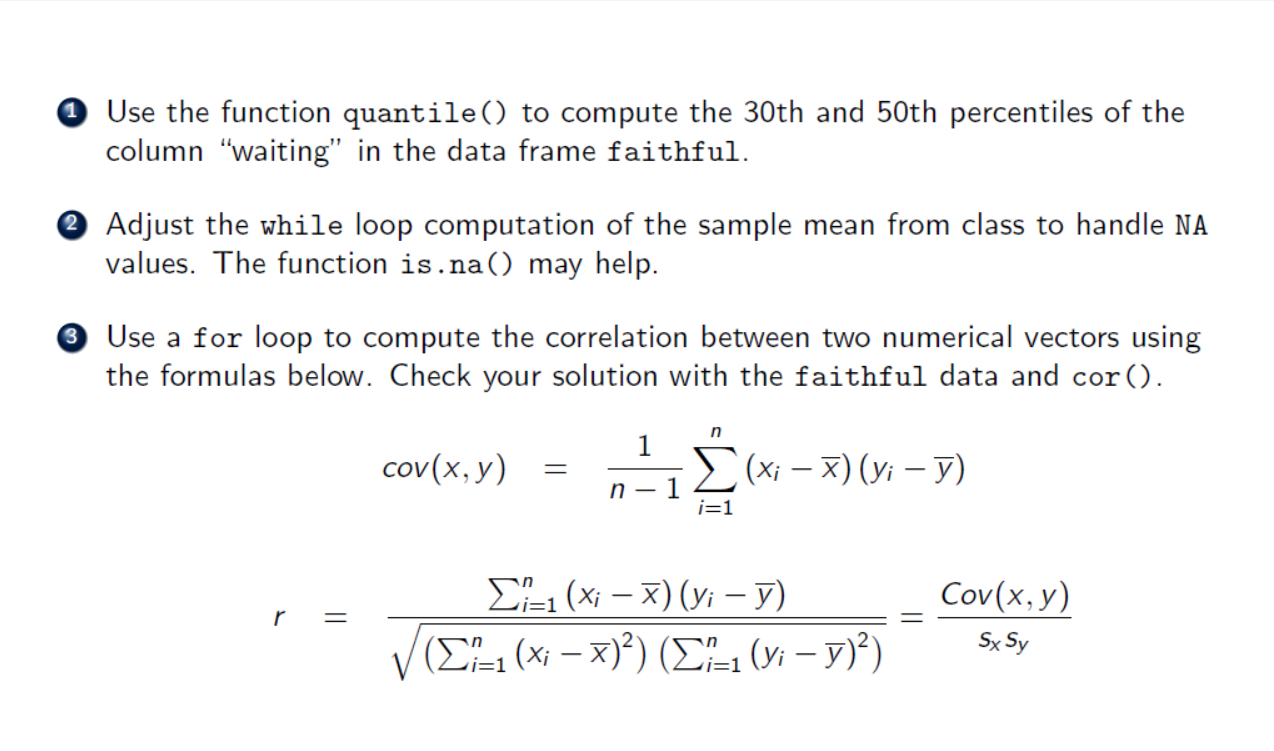本文编辑版本:R version 3.5.0
一、 循环for while语句
回顾R中的数据结构,假设:
x <- c(5, 2, 6, 8, 4, 2)
这是一个简单求和然后求均值的问题,对于一个vector,求每个数的总和,你可以简单地写出: sum(x)/n 或者mean(x)来求均值(没人会说这不行)。当然为了教学,我想在这里引出循环来解决这个问题:
n <- length(x)
sum.x <- 0
for(i in 1:n){ # loop repeated n times
# compute cumulative sum
sum.x <- sum.x + x[i]
print(i) # print index value in each iteration (for debugging)
} # end for loop
# compute average
sum.x/nfor loop里面的i,只是一个代号,你可以把它换成m、n之类的未被定义的字符,效果是一样的(但是我不推荐)。同时,你也可以使用while loop来解决这个问题:
# average the numbers in vector x using a while() loop
sum.x <- 0
index <- 1 # set index
n <- length(x)
while(index <= n){ # loop repeated as long as index
# is less than or equal to n
# compute cumulative sum
sum.x <- sum.x + x[index]
print(index) # print index value (for debugging)
# increase index
index <- index+1
} # end while loop二、逻辑符号
再介绍一些逻辑符号,大家可以自己尝试效果:
##############################
# logical operators table #
##############################
x <- 5
y <- c(7,4,2)
z <- c("a","b","c")
!(x > 4)
x == 4
z == "c"
x != 4
(x>4) & (x<=10)
(x>4) | (x==6)
any(y==2)
all(x==3)
is.element(x,y)
x%in%y
3、条件语句
# Try the following:
x <- 145
if(x/3 > 10){
print("Yes!")
}else{
print("No")
} # end if/else最终,这会输出为“Yes!”。如果我们要求一个vector的中位数,我们可以简单地median(x),不过我们也可以使用条件语句:
#################################
# measures of center: median #
#################################
x <- c(1, 3, 5, 2, 7)
n <- length(x)
if(n%%2==0){
# n is even
median.x <- sum(sort(x, decreasing=FALSE)[(n/2):(n/2+1)])/2
}else{
# n is odd
median.x <- sort(x, decreasing=FALSE)[ceiling(n/2)]
} # end if/else
median.x
# verify with R functions
median(x)
quantile(x, probs=0.5)Cool right? 只需要简单地学习一些符号和逻辑,我们便可以自己定义中位数,均值地方程了。 只要你愿意,你也可以尝试计算x的方差, 标准差。 不如自己动手尝试一下?如果X里面还有NA项呢?我们的语句(试试while)需要调整吗?该如何调整?
KEEP IN MIND:
You will not break your computer: when in doubt, just run your code and see what happens;
Test small portions of your code at a time to remove errors;
Comment your code LIBERALLY so you remember what you have written;
Help pages are very helpful;
For longer programs, write a draft of your code in English before translating it into R code; (i.e., write a template)
To stop running code press the Escape key (on a Mac);
There is almost alway more than one way of writing a piece of code.
试试这些些题目,看看能不能很快做出来:

最后
以上就是魔幻皮带最近收集整理的关于R语言入门教学(5)- For while if/else 以及逻辑符号的全部内容,更多相关R语言入门教学(5)-内容请搜索靠谱客的其他文章。








发表评论 取消回复